Conceptual Portrait
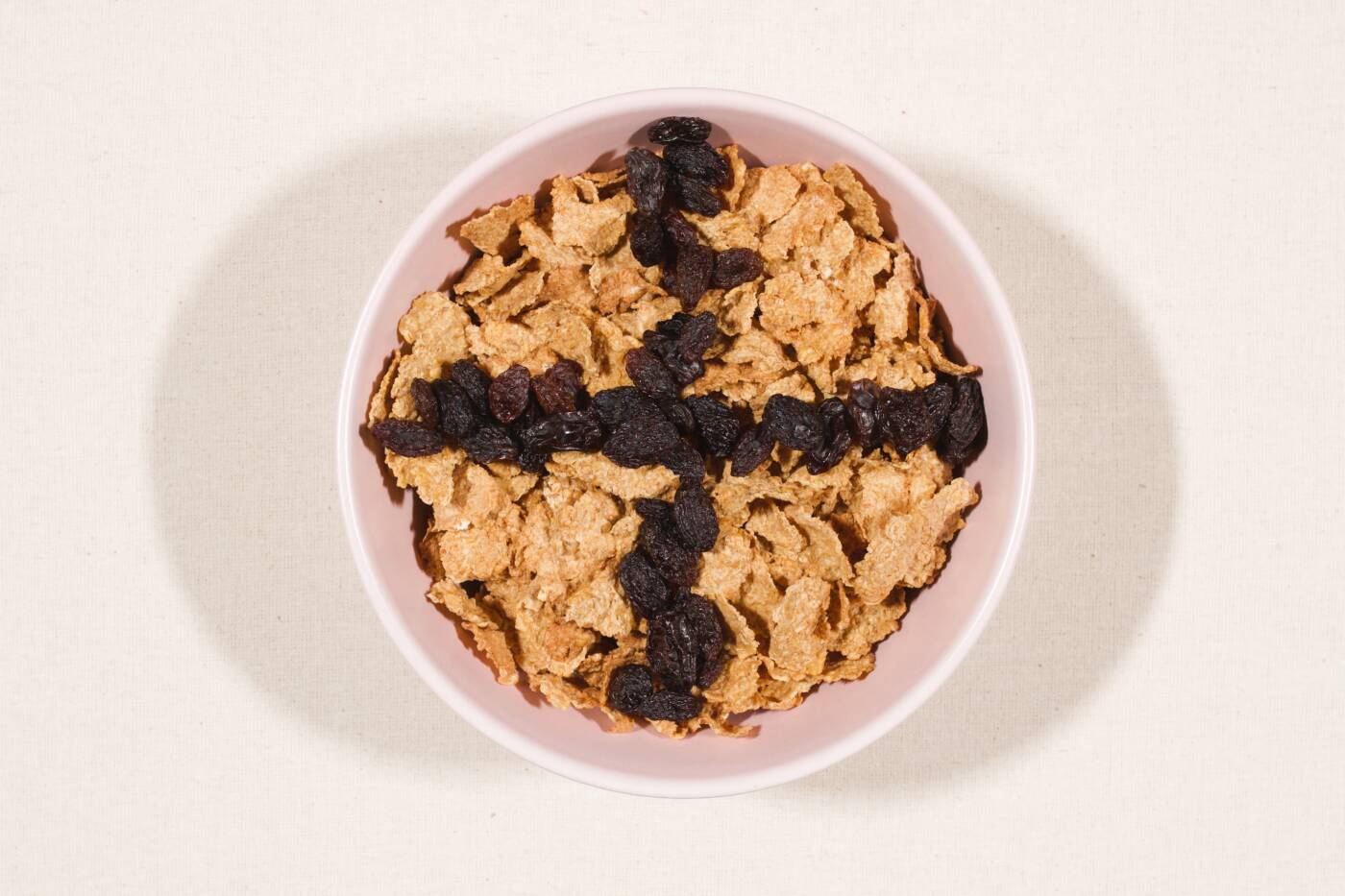
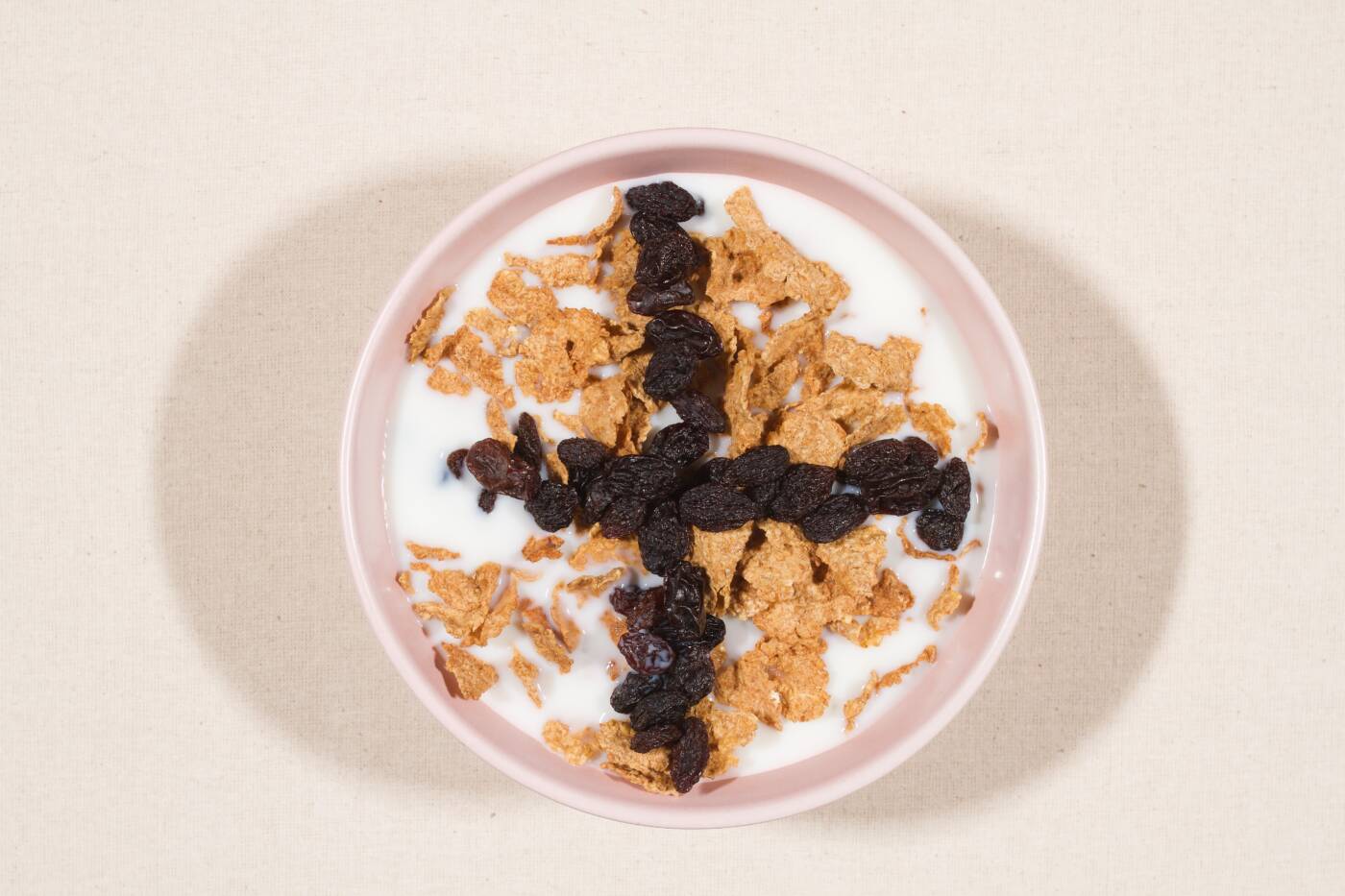
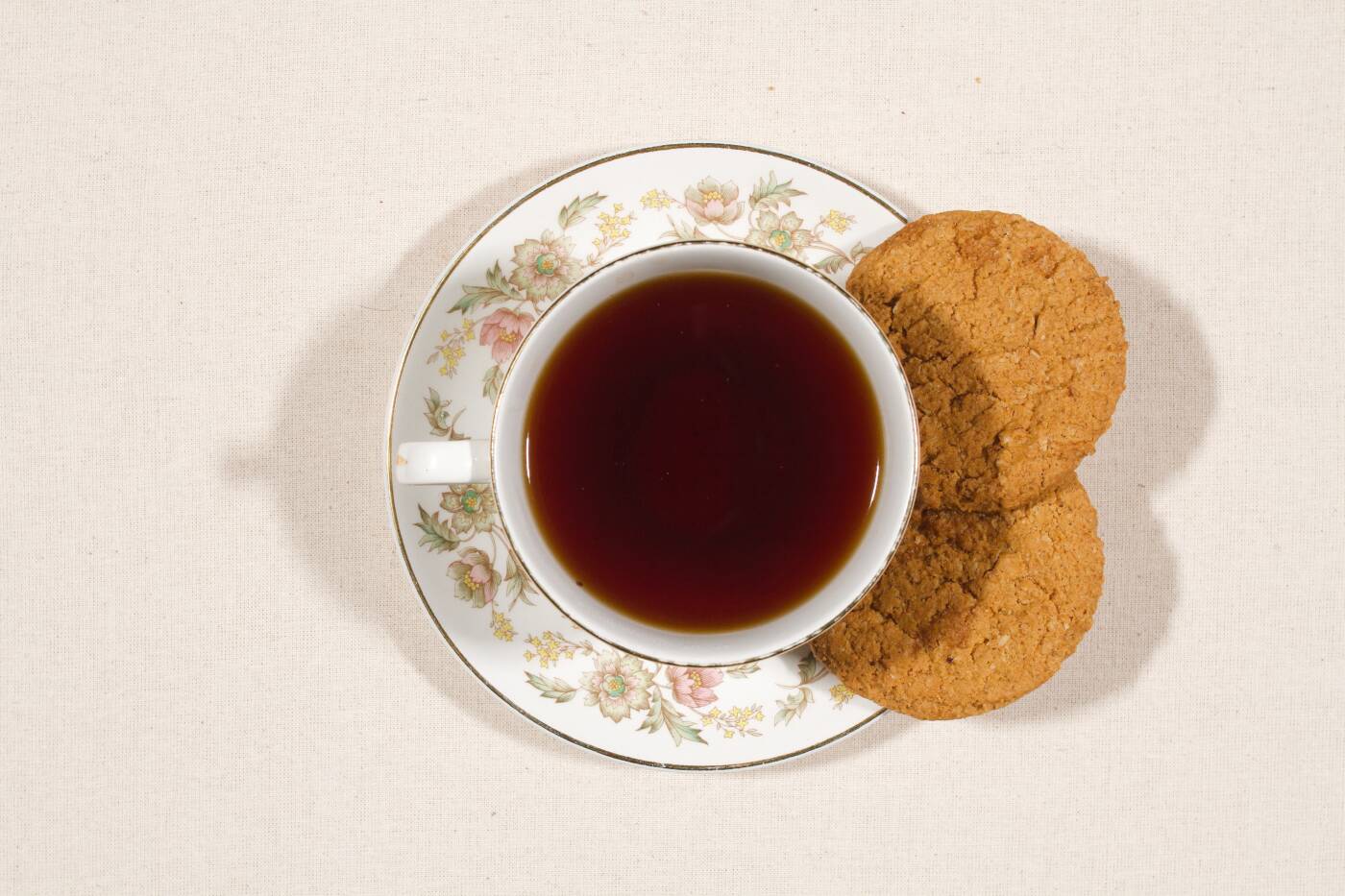
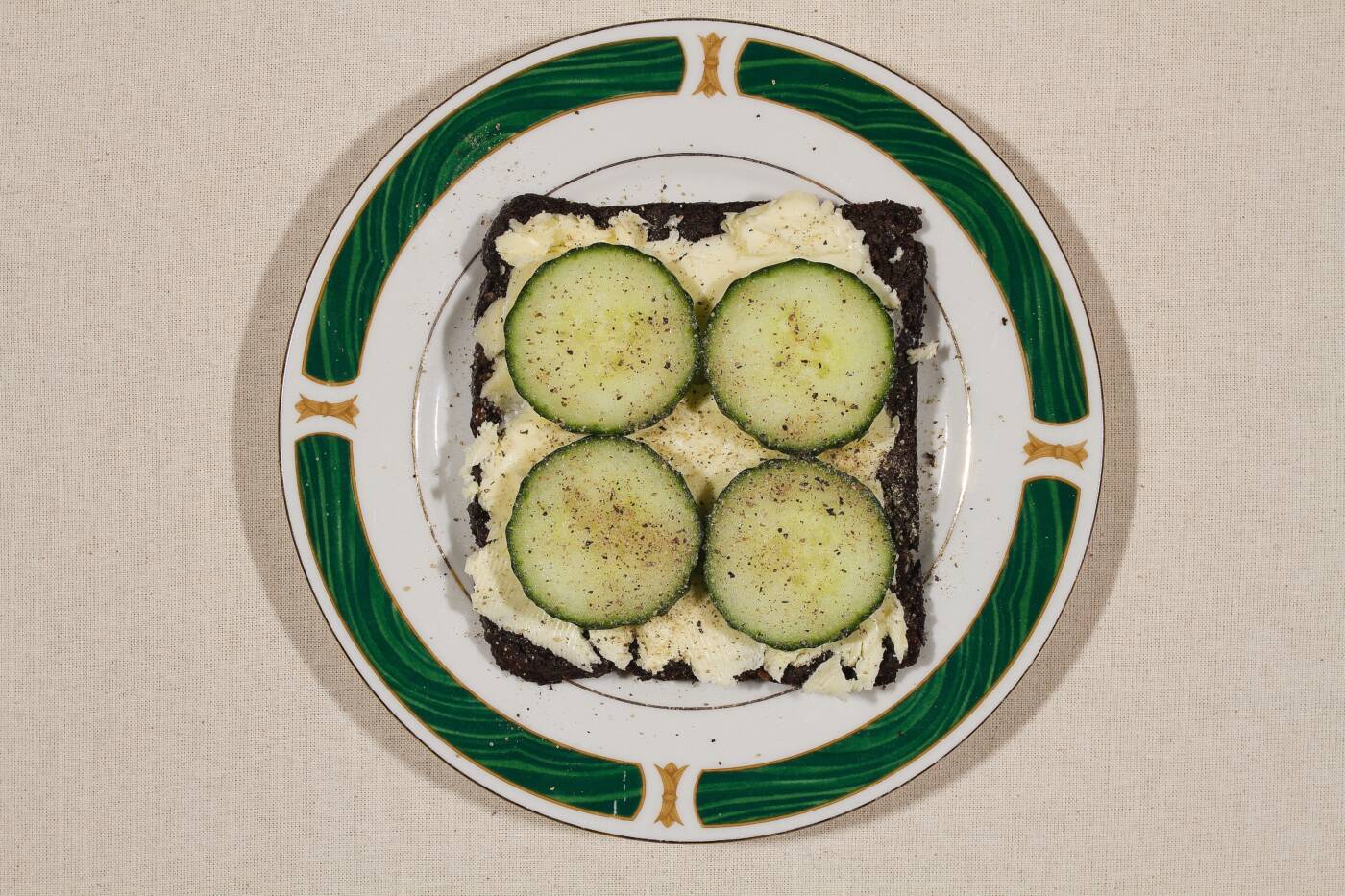

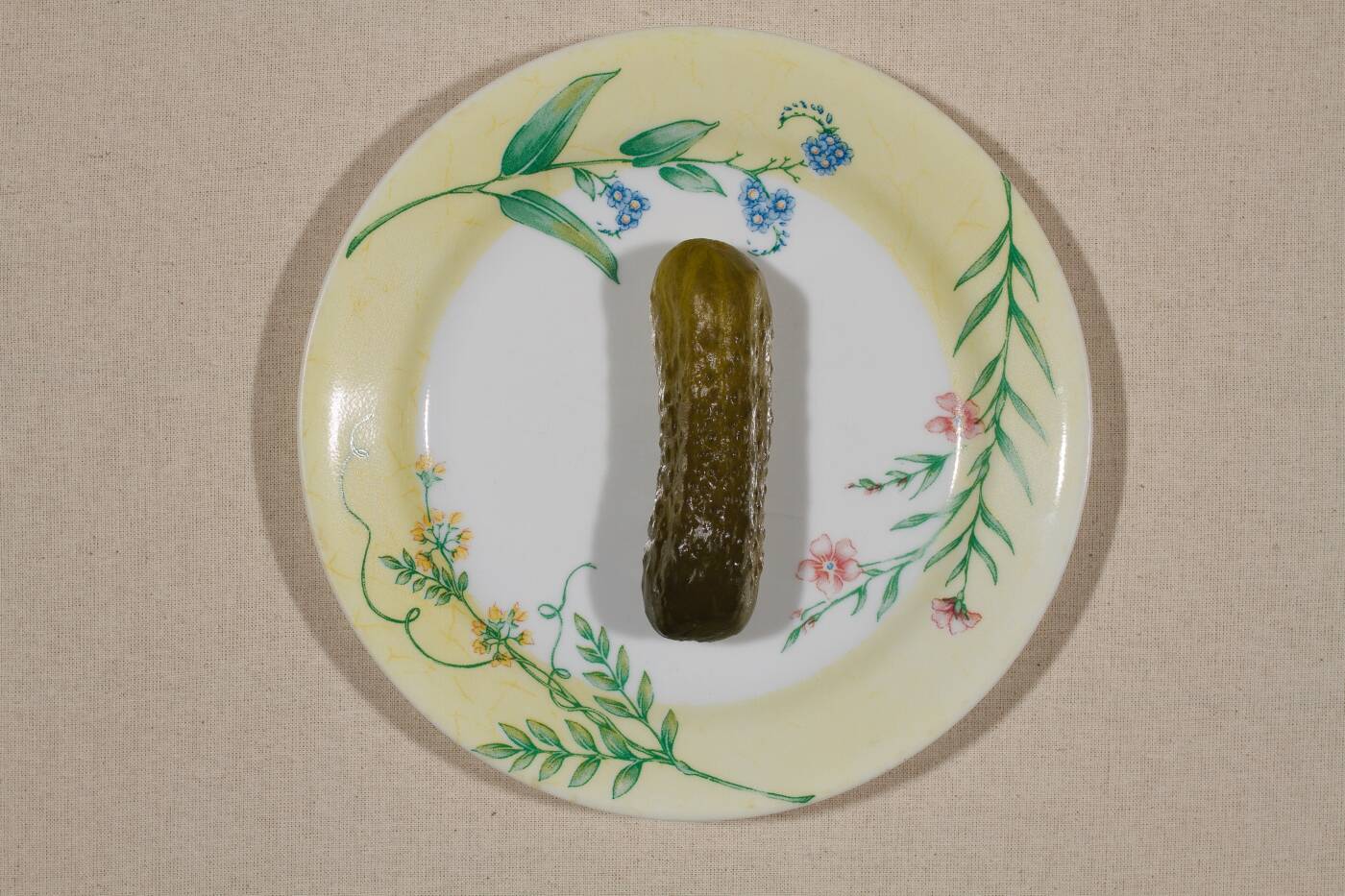


My Grandfather’s diet:
For my conceptual portrait, I wanted to catalogue through photograph what my Grandpa would eat in a day as remembered by myself and with the help of my Dad. My Grandfather died almost 15 year ago, but I can still vividly remember his favourite foods and the deliberate, methodical and eccentric way he chose to eat. This list of food includes:
- bran cereal (no raisins) add raisins and line them up in the shape of a cross
- Dad’s oatmeal cookies and clear tea (no milk no sugar)
- Dimpflmeier’s bread, with a layer of butter on it, like icing on a cake, sliced cucumbers on top, layered with salt and pepper.
- cheese cut in slice, licked and covered with salt
- pickles (no garlic)
- 3 hot dogs (no name brand) salted + green cabbage salad with lots of mayo, salt and pepper
- PC diet cola – decaffeinated – gold can
Audio Art:
Slatko
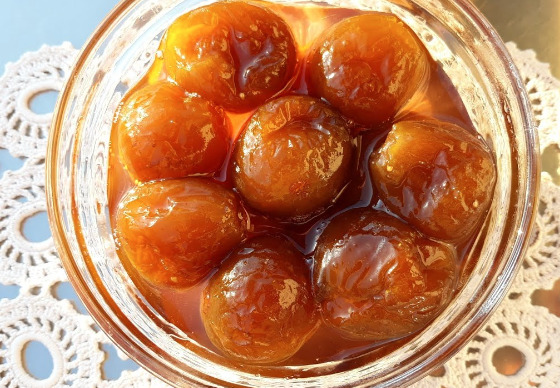
For this audio piece I interviewed by mother in law about one of her favourite foods Slatko, a type of preserved cherry with walnuts that is popular in Serbia. My mother in law lost both her parents when she was a teenager and then immigrated to Canada in the early 90’s just before the Serbian Bosnian war. Because of this, some of her favourite recipes have been forgotten due to her displacement. Some of her favourite recipes are just estimations of what she remembers from her childhood. I wanted to capture her perpetual busyness so I recorded her in the kitchen while she talks to us about Slatko.

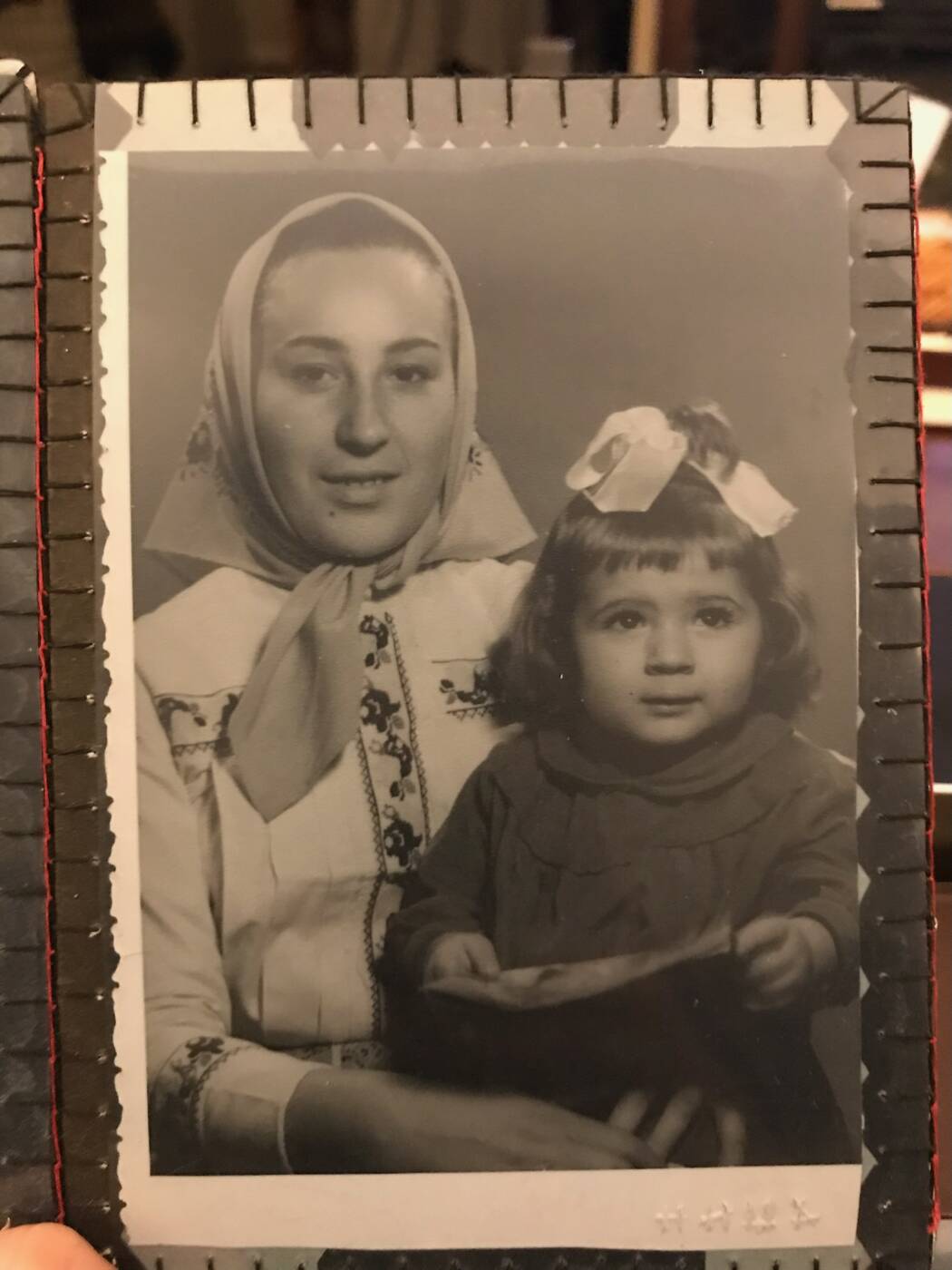
Cake 1. One take. We went with a very clinical look for our videos. A plain white background and plain clothing. Handmade and juvenile in construction we wanted the cake to be the main focus of our videos. The first video had me sitting crosslegged with a napkin tucked into my shirt. We wanted our one take video to have me eating the cake in an over the top, polite manner. We were inspired by the TikTok phenomenon of “intuitive eating” that is often targeting woman and gives advice on eating strategies. A particular one that circulated recently was advising viewers to always put ones utensils down until you swallow a bite, to slow your eating. We wanted our first take of eating cake to be hyper controlled.
Cake 2. Our loop video. We wanted a continuing loop of us eating cake in a very raw and animalistic way. Food can be such a complicated thing. And I am endlessly curious about peoples (especially woman ‘s relationship to food.) Food can be joyous, and fun but it can also be incredibly stressful and triggering. As someone who has struggled with a pretty gnarly ED in the past, it was difficult for me to mentally prepare for this video. It felt really important for me to fully commit and give in to eating this cake with abandon, shovelling as much cake into my mouth as I could. I am really proud of the result.
Cake 3. Our edited video. This video is my favourite! We wanted Ava to have a very intense and deadpan look on their face. I think the build up in this video is very strong. As they stare straight forward into the camera, they deliberately pull each candle out of the cake. (we slowed this portion down for extra effect) Next they smash their face into the cake with total commitment. When they bring their face back up their glasses remain in the cake and their face is covered except for their eyes. In our first take they laugh as they came up to stare into the camera so we edited that section out. I think it’s super powerful and creepy the way they remain expressionless even as they lick some icing off their face.
Post an image from one of Rist’s videos that you are most interested in. Summarize the action of the video. Who is performing, and how? Describe the images – including framing, colours, and movement. How did she shoot and edit the video? Describe the sound and how it interacts/enhances/competes with the images. How is it installed in a gallery – in terms of projection/scale/presentation in a context of other things? How does the work strike you?
This image from one of Rist’s work is from “Pour Your Body Out (7354 Cubic Meters) which was a video-in-round immersion that was exhibited at the MoMA. Rist invited audience members to relax and stretch out on a circular cushion while being confronted with huge images of up close feminine bodies. Her images are bright, opting to give pale skin a more abnormal hue over muting the colours elsewhere in her visuals. The body in this image is filmed so up close that it appears as if we are only millimeters away from her skin. This effect is created by a technique that Rist uses in which she attaches a video camera to a handheld broom. This creates a sense that we (the viewer) are at the same level as the woman moving through the grass. The music is created by Anders Guggisberg and emanates from a sculptural seating element inspired by the shape of the human eye, creating a multisensory, multimedia immersive experience. This work strikes me as a deeply intimate experience, making the viewer uncomfortable in its proximity to the subjects.
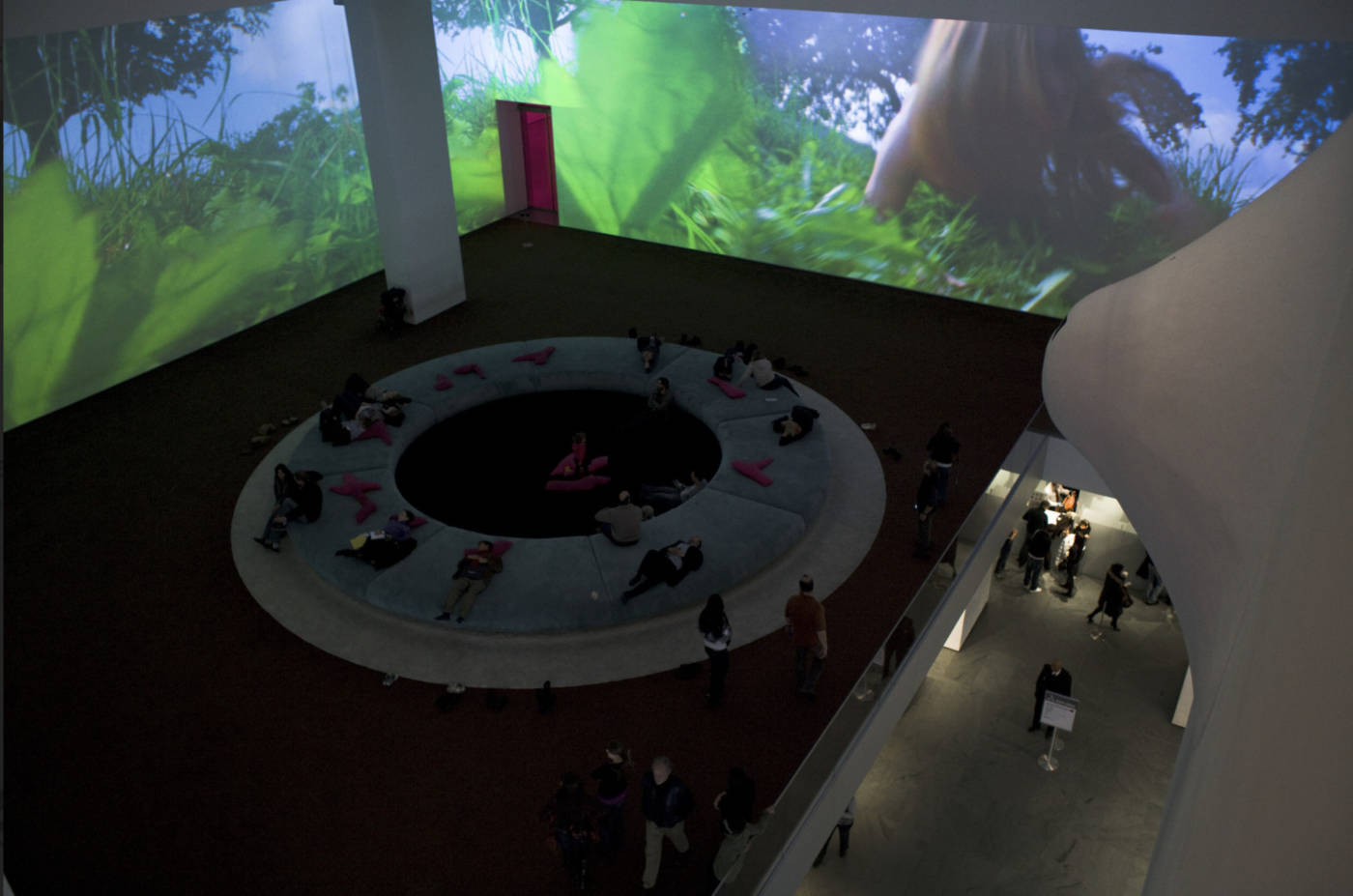
Rist has had a long career in video art making – how do you relate it to the kinds of video that you might see all the time on Tik Tok or You Tube, in our time? Reflect on her performances and also – on her ideas (particularly about women’s bodies, and sexuality, exposure, behaving strangely or subversively…) and how they play out from examples in her works.
Rists video art making has a lot of parallels to the type of videos one might see on Tik Tok or You tube today, the videos are subversive without being too confrontational, they are playful and humorous while still asking the viewer to examine ideas about women’s bodies, sexuality and exposure. Ever Is Over All is a video I feel that I might see scrolling through Tik Tok or Youtube today even though it was a video that was shot almost 30 years ago. The feminine protagonist in a sky blue dress, walking down the street smiling, while smashing car windows with a bat that appears in the shape of a red hot poker flower made me think of Beyonce in her 2016 music video “Hold Up” in which Beyonce gleefully smashes car windows with a baseball bat in a bright yellow dress. Ever Is Over All is colourful and inviting while also asking the viewer to reflect on femininity, women’s bodies, female rage and whiteness.
Experiment: While still at school – put on your sweater/shirt INSIDE OUT. How does this change how you feel? Is it changing how other’s are treating you? If you can wear your sweater/shirt inside out all day – make a few notes about the results of this very small change in your presentation in public. Is this a performance? Why?
I spent the day with my shirt swapped inside out and I honestly don’t think many people noticed, except my MIL. We went to run a few errands together and even though she is the sweetest and would never tell me what to do, I think it did make her a little uncomfortable. My MIL is from former Yugoslavia and when they immigrated to Canada in the 90’s I think they found it hard to culturally assimilate. My Partner has a story of their dad going to the beach in a speedo in the 90’s (a very common fit for Euro men) and feeling like everyone was staring at them. I think because of this my MIL would never do anything to draw attention to herself in public or intentionally “other” herself so I did feel bad for making her take part in my little social experiment. Personally, I felt a little uncomfortable with the experiment, but as a feminine appearing human and someone who has lived many years in openly queer relationships I am used to looks from people so feel I am pretty good at dodging or ignoring stares and strange looks. Because I was aware and making a choice to flip my shirt inside out (I have definitely walked around before oblivious to having my clothes inside out) I do think this was a performance of sorts, because it was intentional.
1 KM Project
One skein of the yarn I chose is 150 grams. This particular acrylic yarn yields 2km every 1gm. 4 skeins of yarn reaches 1 km. For my piece I dueted a video of myself (sped up) doing repetitive slip knots into 1km of yarn with an AI read excerpt from the article Is Tradwife Content Dangerous Or Just Stupid? By Kathryn Jezer-Morton. I wanted this piece to exhibit a monotonous task, as I have been thinking a lot lately about invisible household tasks and the way labour is divided in a household. By juxtaposing the image of myself creating slipknot after slipknot with the article being read in the background aims to interrogate the viewers own relationship to domesticity and undesirable tasks. Doing dishes just to have them used again or washing laundry just to have it dirtied again are tasks that feel similar to the labour of a 1km long repetitive slip knot line, a task that when finished, I undid and rerolled again.
What are some of your first impressions of Marina Abramovic’s performance works, based on the documentary? Use an image/example of one or two works2. to describe aspects you admire, and aspects you might agree are problematic?
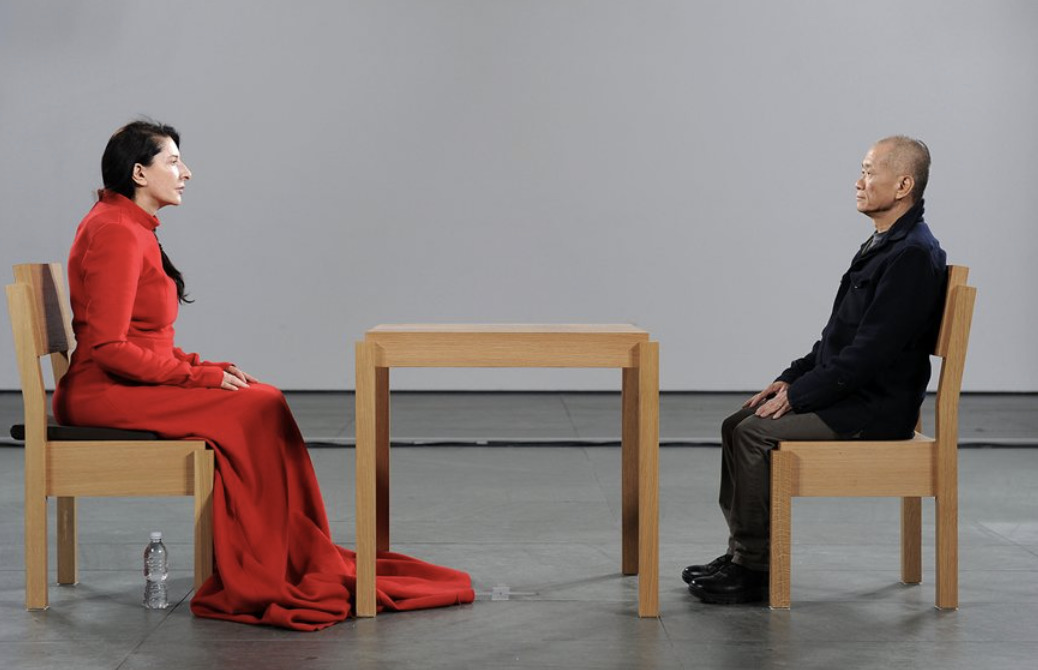
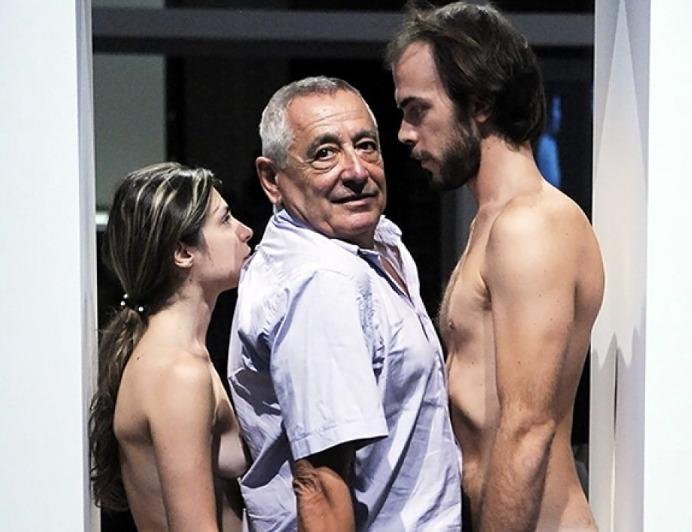
Some of the first impressions of Marina Abramovic’s performance work based on the documentary is the way it seems to parallel the artists upbringing and young life. The documentary talks about how rigid and militaristic her upbringing was, with a mother who showed her little physical affection and wanted a child who was “not spoiled” going so far as to wake her up at night if she was not sleeping straight in bed. This childhood devoid of physical affection and full of discipline and schedules can be seen in the artists performance which requires extreme physical presence, strength and stamina. Unlike her lonely childhood however, Marina Abramovic’s work appears to be a love letter to her audience, creating a charismatic space in which the audience is her “lover”. The two images I chose to display are from her MOMA exhibit The Artist is Present. In the first image Marina sits across from an audience member, this performance I admire as it strips bare all of societies preoccupation, creating a shared experience between the artist and the audience, creating an energy work that asks her viewers to be in the present, to slow our brains down and just to be in shared space together. The second image is one in which two of her 30 chosen artists are performing one of her previous works in which they stand naked face to face as gallery attendees squeeze through the small space between their bodies. This is found to be potentially problematic as the movie spoke of the protocols and considerations that were created for Marina but did not speak of any similar protocols given to those 30 other artists. The documentary spoke about how security would promptly escort out anyone who Marina did not feel safe or comfortable being there with. If she raised her hand that meant that the person across from her would be asked to leave. As the documentary spoke of this I wondered if the other 30 artists were allowed this level of autonomy or control.
What have you learned about features of performance art based on Abramovic’s work? Name a few key features according to her precedents. Include an image to illustrate. Consider her quote “When you perform it is a knife and your blood, when you act it is a fake knife and ketchup.”
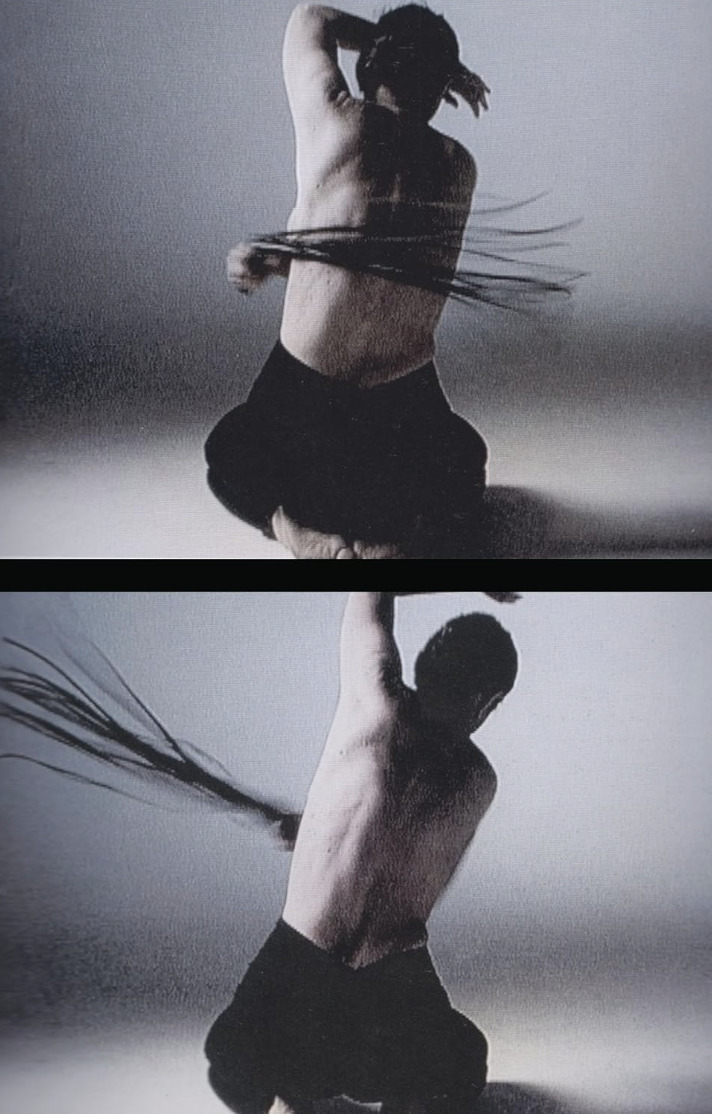
Some of the essential features of Marina’s work are using the body as a medium, using violence, provocation and a creating a shared experience with her audience. Her work seeks to showcase the veneer of civilization and how we as humans are close to being bestial. The attached image is one of her early performances in which she flogs herself on stage. Marina has said that she is not a masochist but instead “I hate it,” she says of pain, “even if I’m cutting garlic and by accident cut my finger, I really don’t like (it). I don’t like anything painful. I love life. I’m not interested in dying. I’m staging these difficult situations in front of the public, using the energy of the public in order to figure out and get free from these fears.” I have learned through her art that performance can be used as a task, a way for an artist to work through their fears or desires. It was interesting in watching her film that she spoke of the distinction between performance and acting. Stating, ““When you perform it is a knife and your blood, when you act it is a fake knife and ketchup.” Even though throughout the span of her career, she both acted and performed. I feel that her acting was giving into her desire for opulence and beauty, her performances on the other hand were to interrogate her fears.
Discuss the ways performance art resists many museum and commercial artworld conventions. How does Abramovic solve/negotiate some of these challenges, and do you find these compromises add to, or undermine the ideas at play in her work?
Performance art asks audience participation in a way many museums and commercial art-world conventions typically do not. As one of the interviewees in the film discussed, typical, conventional artwork is usually viewed for a matter of seconds, people hovering around the Monet Lisa for example for around 30 seconds. Abramovic on the other hand, asks people to be involved in her pieces, asking them to sit with her for as long or as short as they feel. Further, her celebrity as an experimental performance artist means that her exhibits attract people to come stake out spots for hours or even overnight just to get a spot in her performance. Abramovic seeks to bring people into her art, for people to interact and participate as equals, as she stated in the film, she does not wish to be an idol. However, I do think that as her level of fame and wealth has risen this idea is compromised. Even though her wishes may not to be an idol, her performances are now rockstar-esque ( with 750,000 people attending her MOMA exhibit) and the audience are essentially her groupies.
#1 Super Friend Buttons
My buttons were inspired by the TikTok concept of “Roman Empire” (something that one thinks about daily) a video I saw had a woman saying that a woman’s Roman Empire is their best friend that they no longer speak to. I resonated with this idea and decided to create a button about friendship. As the loss of my best friend has been something I have ruminated and obsessed about for a long time. I wanted the buttons to say #1 Super Friend in different fonts. Appearing naïve and childlike while also being about a subject that I feel haunts many adults, the loss of a deep friendship and the yearning for another connection that feels as true.
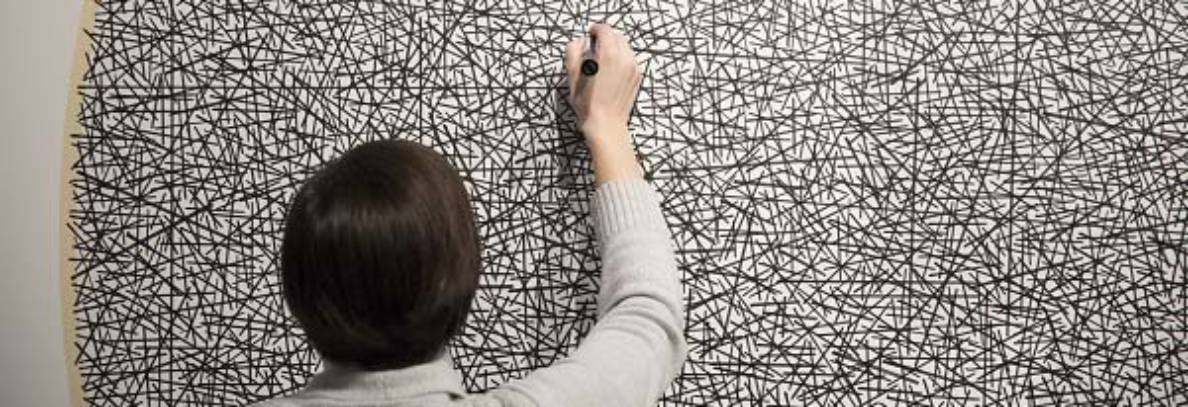
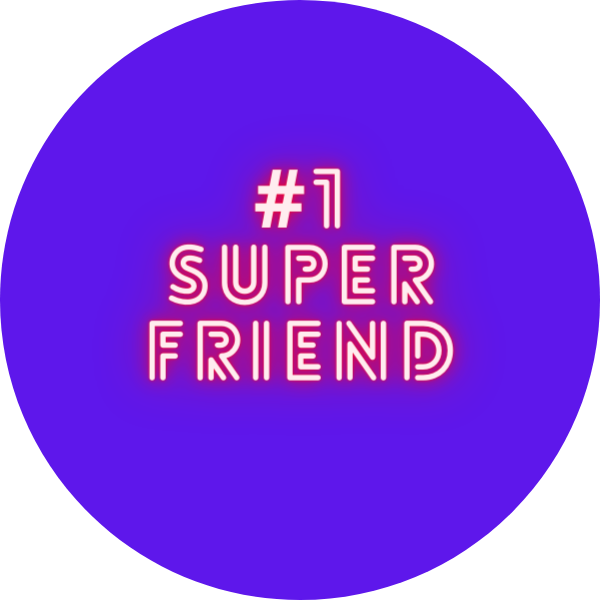


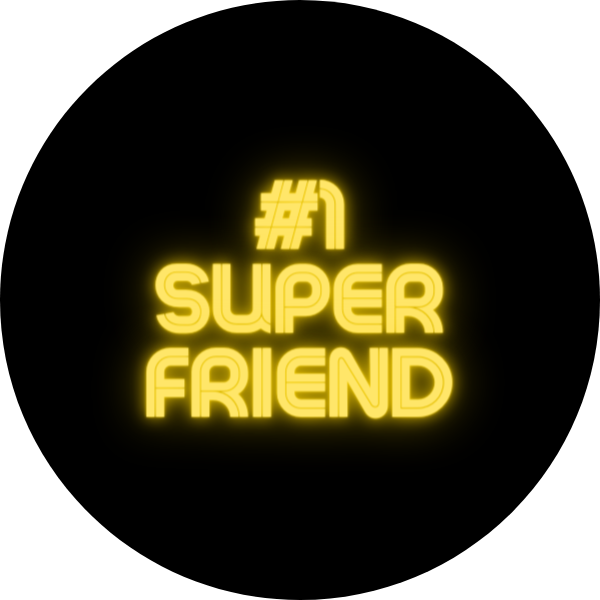

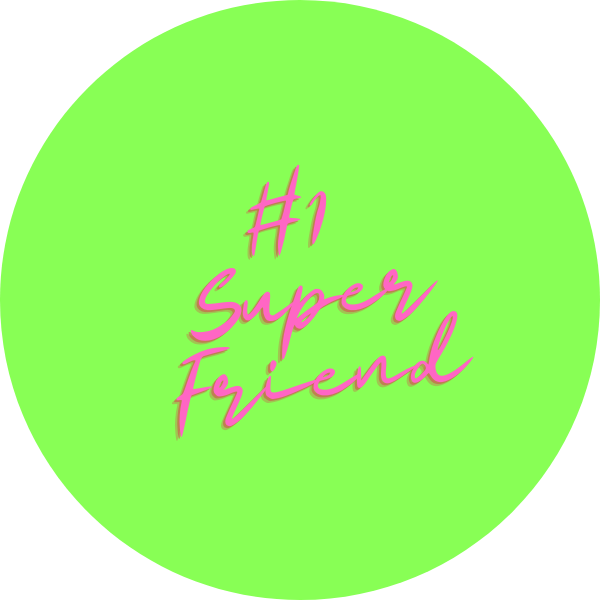
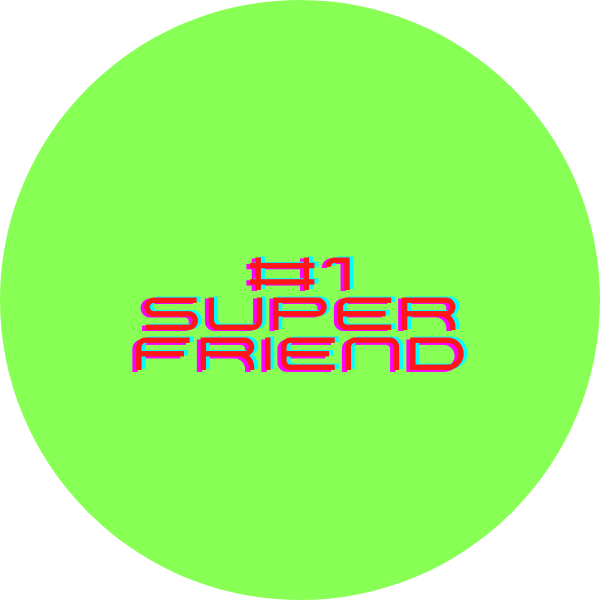

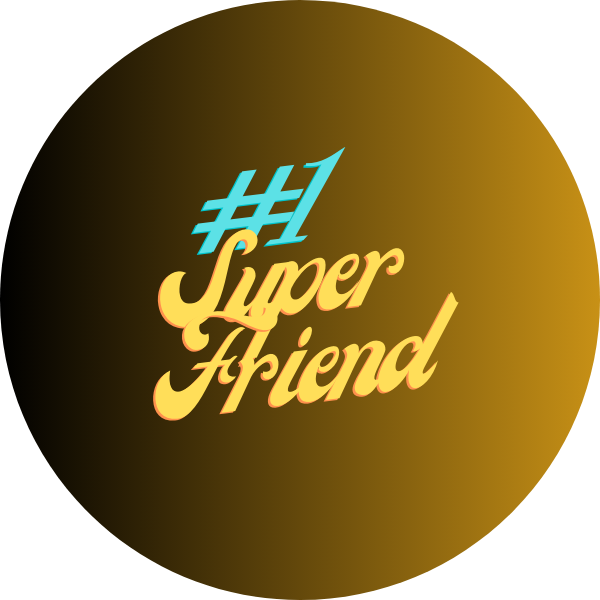
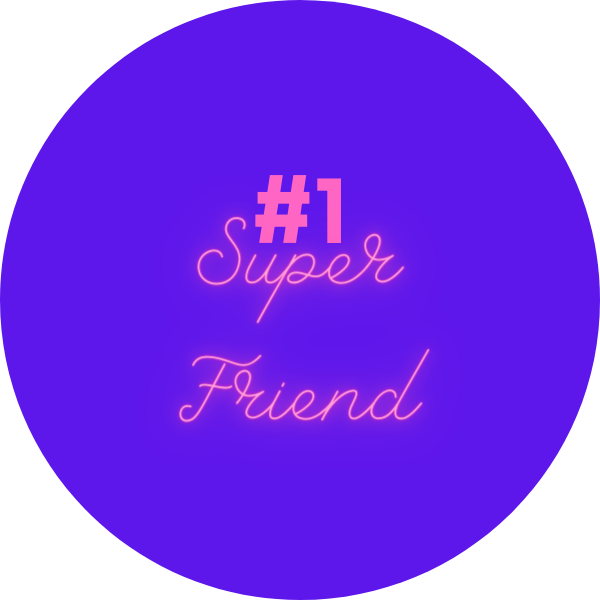
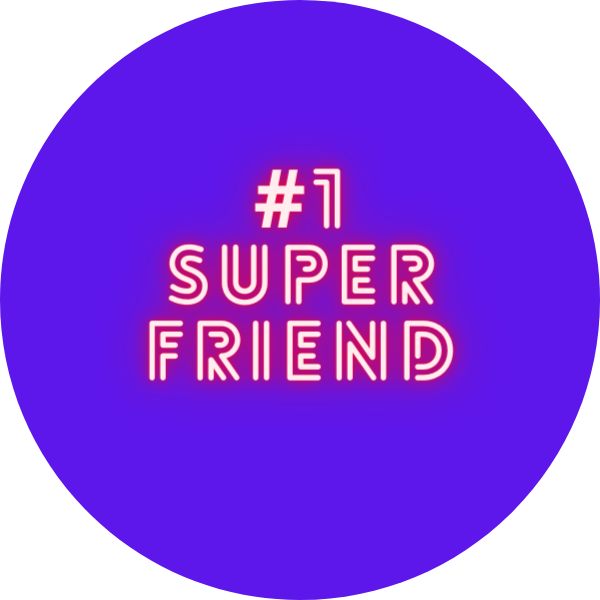

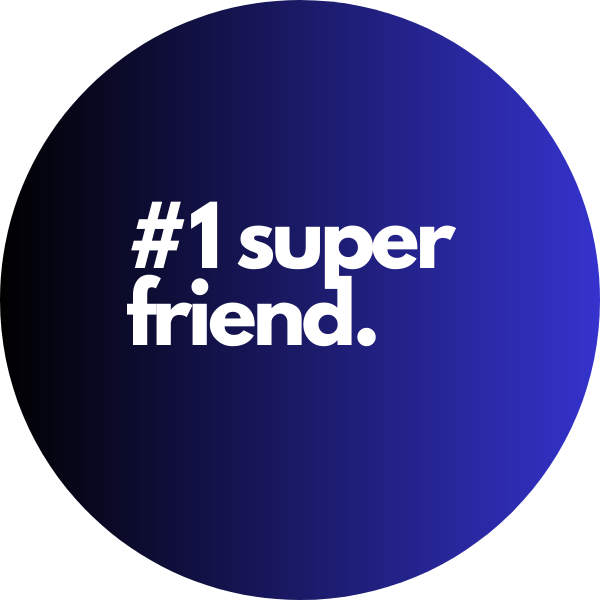

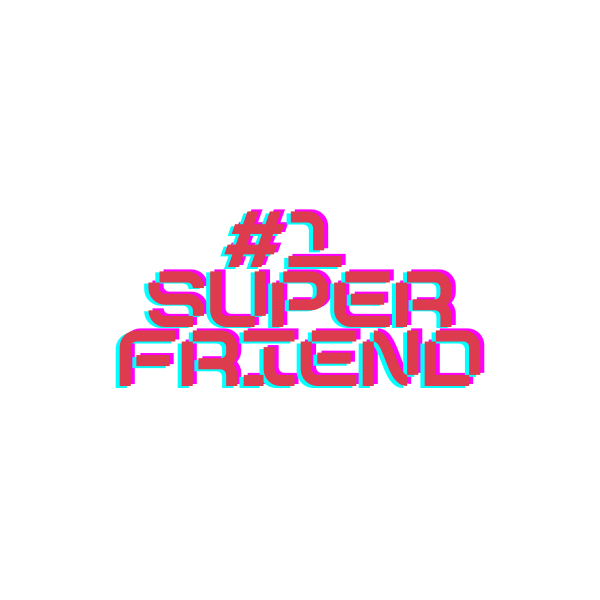
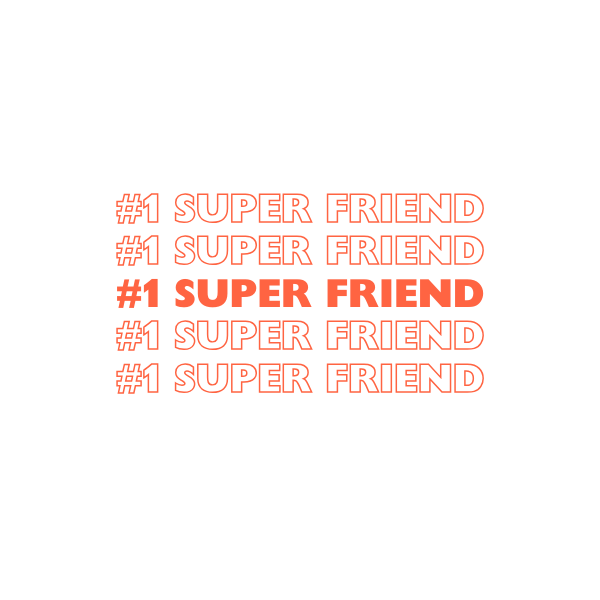
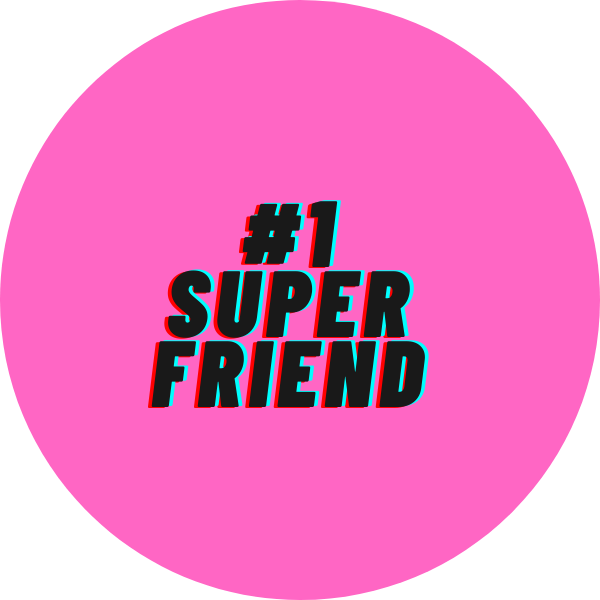
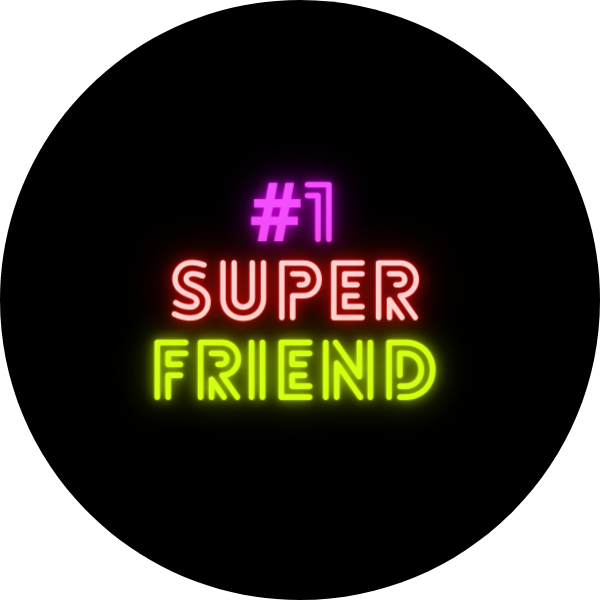
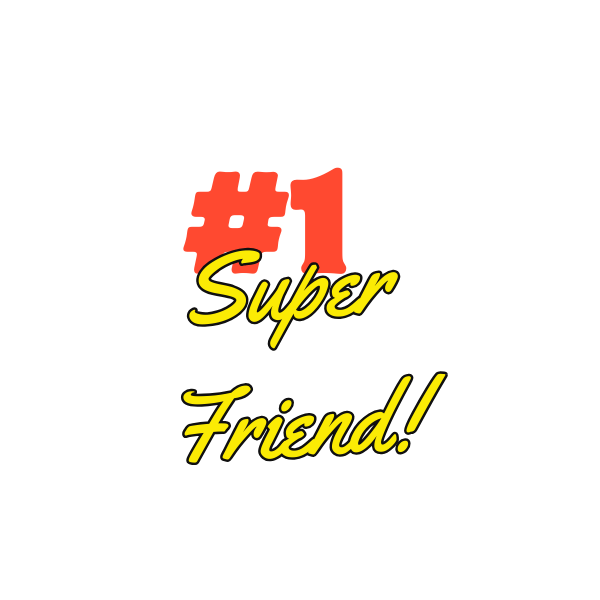

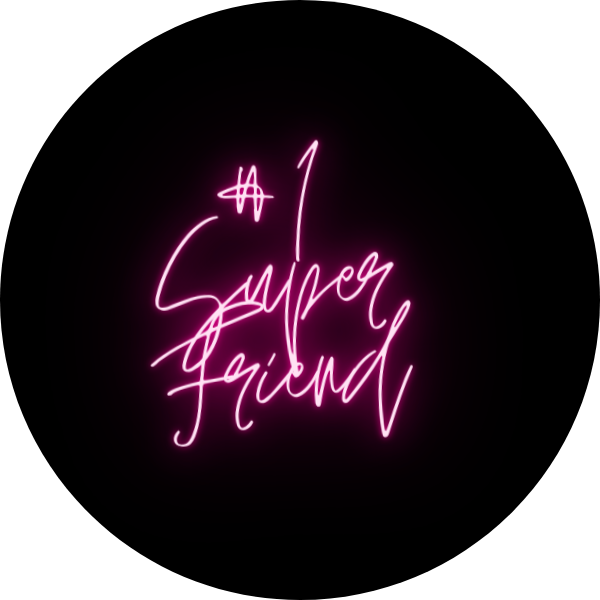
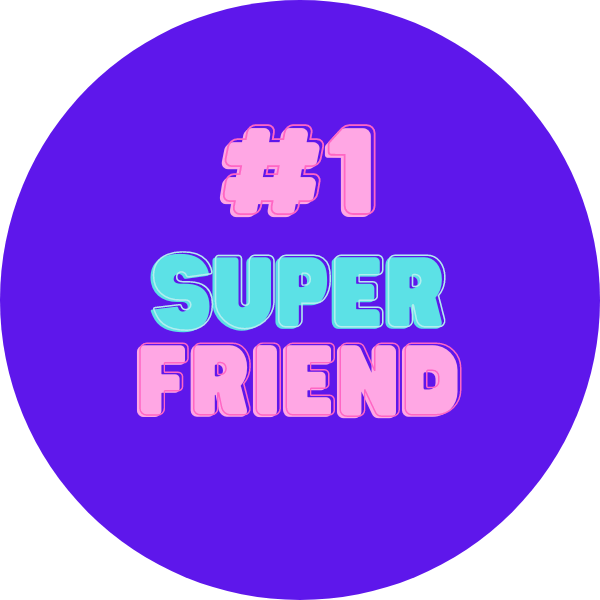
You must be logged in to post a comment.